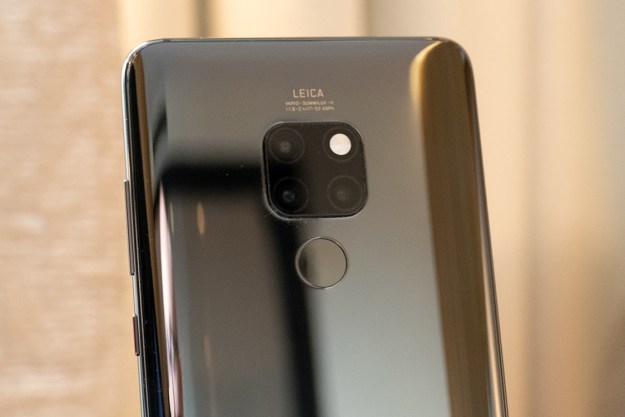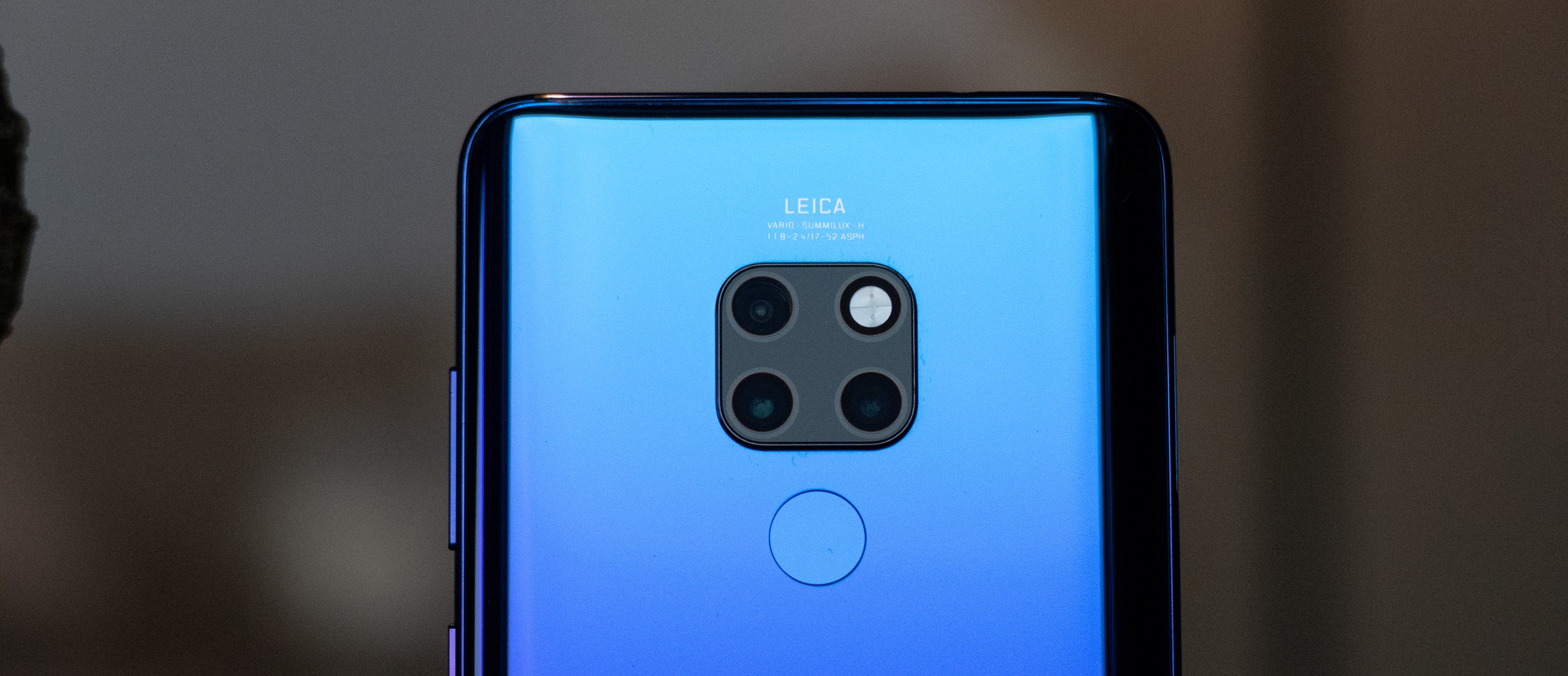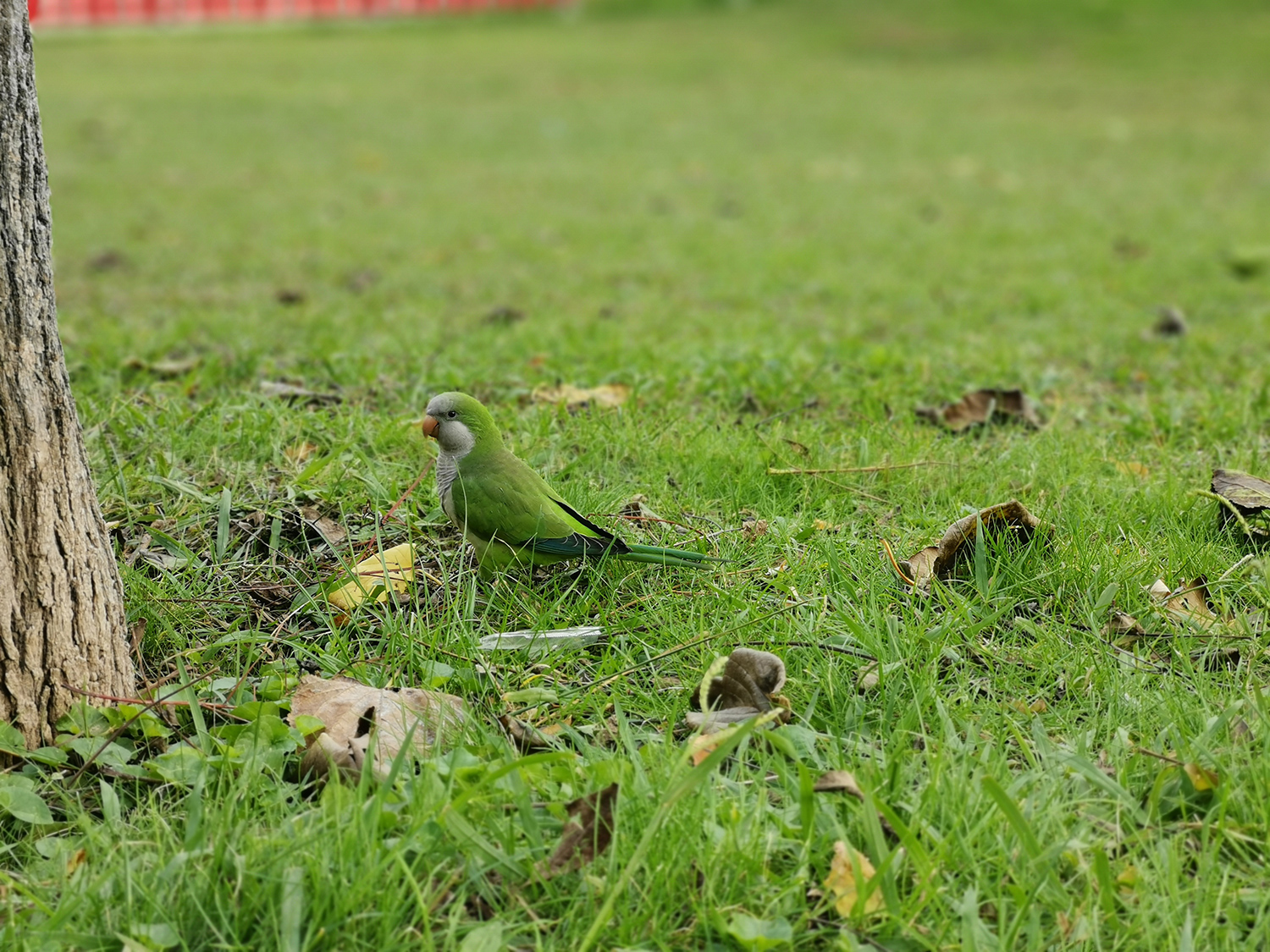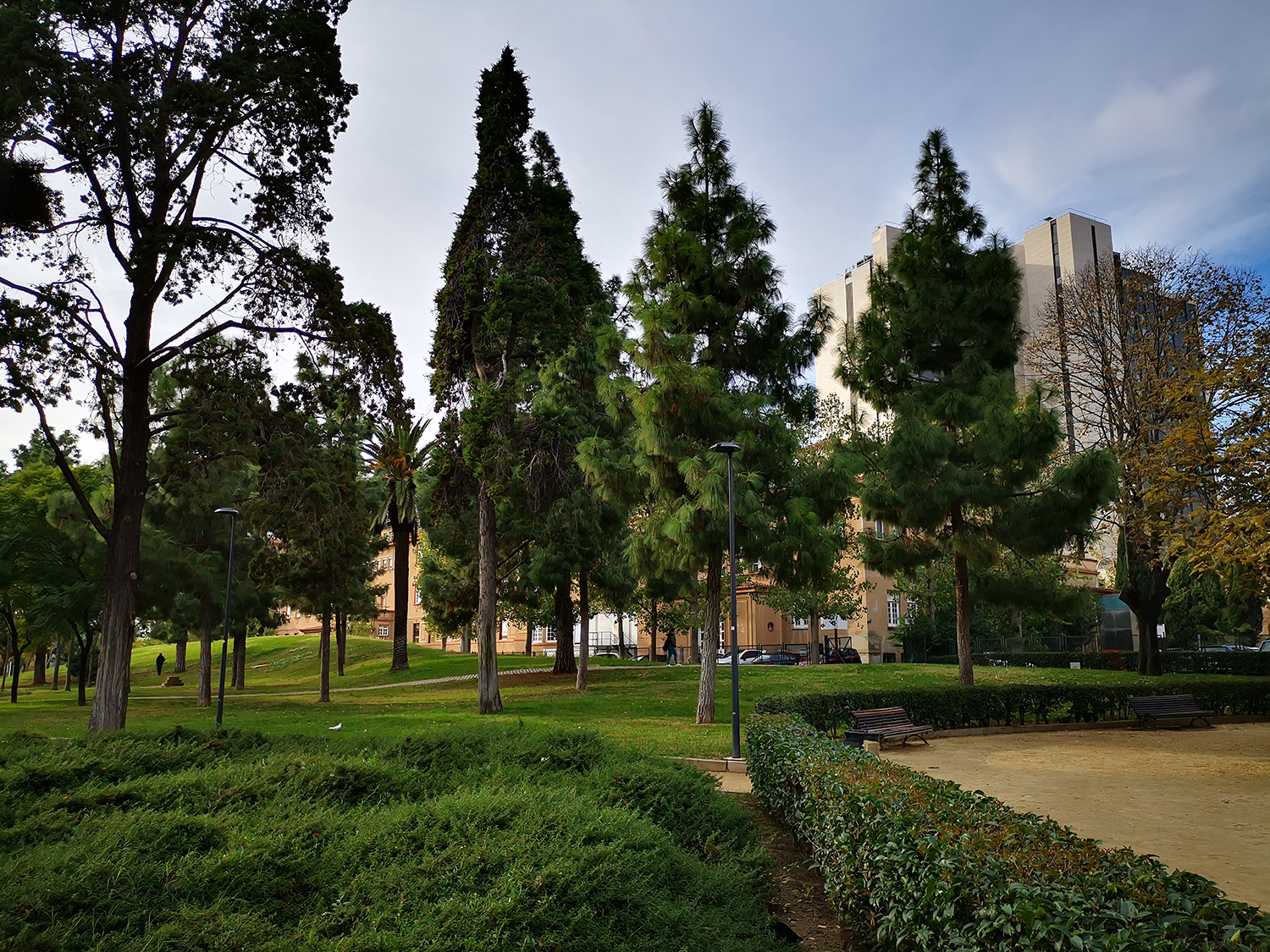
“The Huawei Mate 20 is a capable, high performance phone that proves less tech can sometimes mean a better user experience.”
- Traditional fingerprint sensor is welcome
- Battery life is superb
- Camera impresses
- Media experience, both audio and visual, is great
- 3.5mm headphone jack
- No wireless charging
- Some software niggles
- No U.S. availability
Ron Howard and Clint Howard. Alec Baldwin and Stephen, Daniel, and William Baldwin. Jake and Maggie Gyllenhaal. The list of celebrities with slightly less famous siblings goes on for ages. The Huawei Mate 20 Pro captured headlines and hearts this year, and it was also joined by the Huawei Mate 20, which could similarly be seen as its less-famous sibling.
We’ve now spent some more time with the Mate 20, and it may just be one of the unsung hero phones of 2018.
An attractive notch?
The most striking difference between the Mate 20 and Mate 20 Pro is the screen and its tiny, and dare we say it, attractive, notch. That’s right, as notches go, the Mate 20’s is a beauty. It’s a teardrop notch, just like we’ve seen and appreciated on the Essential Phone and the OnePlus 6T. It takes up less room than the full size notch on the Mate 20 Pro, and after the Pixel 3 XL’s notch, which is deeper than some oceans, it appears positively petite.
This means more space for notification icons, and a greater sense of a bezel-less display. Huawei has done an astonishing job of minimizing the rest of the bezels on the Mate 20 too. There is still a chin bezel, which is very small and hardly noticeable. The speaker grill is built into the top of the phone, and you have to look hard to spot it. This is one super looking phone.

Looked at face on, when the device is nestling in your palm, the Mate 20’s expanse of screen provides a wonderful window into your media. We loved zooming in on photos, just to see them fill up the entirety of the display. Flip over the phone and the Mate 20 comes in the Hyper Optical green seen on our Mate 20 Pro, a twilight gradient finish to brighten things up, or a super shiny gloss black. There’s a textured sleep/wake key on the metal chassis, and a 3.5mm headphone jack on the top, something the Pro does not have.
This is one super looking phone.
It also has a traditional aspect ratio, making the phone look and feel more “phone shaped,” than the longer and thinner Pro. It’s 77mm wide compared to the 72mm wide Pro, but is almost exactly the same length and thickness. Overall, the Mate 20 is the same physical size as the Apple iPhone XS Max. The other distinct change is the fingerprint sensor. It’s on the back here, below the camera lenses, instead of in the screen. It works as you’d expect — reliably and quickly. We prefer it to the Mate 20 Pro’s in-screen sensor.

The Mate 20 does not have the 3D-sensing front facing camera setup. It still has face unlock, but it’s not suitable for secure payment use. It was also less reliable than previous Huawei phones, and not as fast as the OnePlus 6T. A further disappointment is the lower water and dust resistance. The Mate 20 has an IP54 rating, compared to the Mate 20 Pro’s IP68, making it less durable.
The Mate 20 isn’t as eye-catching as the Mate 20 Pro, and it won’t stand out in a crowd especially in the black color. However, we love the size of the screen, the teardrop notch, and the tiny bezels.
Expansive screen, headphone jack’s back
The Mate 20’s screen measures 6.5-inches and has a 2,244 x 1,080 pixel resolution, for a 381 pixel-per-inch density. It’s an LCD screen that’s a little larger than the OLED on the Mate 20 Pro. The use of LCD is not a massive downside, but put it next to the Mate 20 Pro and the improved blacks, deep contrast levels, and stunning colors seen on the OLED screen are immediately obvious.
You won’t get tired of looking at the Mate 20’s screen.
This doesn’t mean the Mate 20’s LCD is ugly though. It still looks great, especially for YouTube and Netflix; you won’t get tired of looking at the Mate 20’s screen. It just won’t play the higher resolution videos you can enjoy on the Mate 20 Pro’s 3,120 x 1,440 pixel OLED.
Huawei has treated the Mate 20 to an excellent array of audio options. The 3.5mm headphone jack is becoming a rarity, but even though it’s included here, the Bluetooth connection hasn’t been forgotten — it’s Bluetooth 5.0, and AptX HD too, plus there is Dolby Atmos to tune the sound. It’s effective depending on the content, but does reduce overall volume, and the Mate 20 isn’t the loudest smartphone we’ve heard. We tested it with Audio Technica’s wonderful ATH-M50xBT, wired and wirelessly, and enjoyed listening.
A speedy companion
The Mate 20 is driven by the Kirin 980 processor, built on a 7nm process, and accompanied by Huawei’s dual-NPU neural processing unit, which takes care of artificial intelligence features onboard the phone. Our review phone has 6GB of RAM and 128GB of internal storage space, but a 4GB/128GB model is also available, along with a dual-SIM Mate 20.
We’re expecting the performance to be the same as the Mate 20 Pro, as they both have the same internal specifications, so we ran some benchmarks to establish that.
- AnTuTu 3DBench: 274,868
- Geekbench 4 CPU: 3,358 single-core/9,867 multi-core
- 3DMark Sling Shot Extreme: 4,107 (Vulkan)
These figures are mostly higher than the Mate 20 Pro achieved, but we wouldn’t read too much into that, and instead consider the two phones equal in terms of power and performance. It has also been that way in our tests, and everything we’ve asked the Mate 20 to do, it has completed without a problem. It mostly surpasses the Pixel 3 and the OnePlus 6T, in all but AnTuTu.
It’s a great gaming machine too. We’ve played Hitman Sniper for hours on the Mate 20, and it never gets uncomfortable to hold, and doesn’t get overly hot. We never saw any slowdown or poor frame rates when playing Reckless Racing 3. In general, everyday use, the Mate 20 is a solid, speedy companion.
EMUI and Android Pie
The Mate 20 comes with Android 9.0 Pie and the latest EMUI 9.0 user interface. Our review model has the October 2018 security patch installed. EMUI 9.0 has been heavily revised over EMUI 8.0, resulting in a 47 percent increase in system response, a 42 percent increase in app smoothness, and a 51 percent improvement in how quickly it opens apps. The settings menus have also been revised, with fewer, more logical options. Huawei has added its own Digital Wellbeing system, called Digital Balance, and a new gesture control system.
Like Apple’s iOS, you swipe up from the bottom of the screen to return to the main home screen, swipe up and pause for the open app menu, and gently swipe on the side of the screen to go back a step. This is joined by a cute, springy arrow animation confirming it understands what you’re trying to do. The gesture controls are generally effective, slicker than the OxygenOS option on the OnePlus 6T, and we didn’t feel the need to return to the standard Android controls. However, the option is there, so you’re not forced to use them.
If you don’t quite like the way it is out the box, there’s a good chance it can be altered.
Using the Mate 20 is the same as the Mate 20 Pro, and many of the frustrations are repeated. Hateful SwiftKey is still the default keyboard, the notifications are still poor — too few ways to interact with them outside entering the app — and it’s not as clean and fuss-free as Android on a Google Pixel 3. Setting EMUI 9.0 up in detail pays off in the long run. It has plenty of options — from the color tone of the screen to whether you want an app tray or not — so if you don’t quite like the way it is out the box, there’s a good chance it can be altered.
Niggles aside, it is considerably better than it was before, and Huawei does listen to feedback, so it’ll continue to improve. There are aspects we really like, such as Digital Balance which provides greater insight than Google’s Digital Wellbeing, and is arguably easier to use too. EMUI is not as instantly usable as other user interfaces, and requires some patience to learn and tweak.
Strong camera
The Mate 20 has a three-lens camera on the back, set inside a square-shaped module with curved corners. At first, this looks unusual, but it gets better with time. It’s shockingly neat, and we love the way the edges curve at the same angle as the edge of the phone — this gives it a softer, more coherent look.
While the cameras look the same on the outside, there are some differences inside. The Mate 20’s main camera has 12 megapixels and an f/1.8 aperture, the ultra-wide-angle has 16 megapixels and an f/2.2 aperture, both of which are lower than the 40 megapixel and 20 megapixel lenses on the Pro. The 8-megapixel, f/2.4 aperture telephoto lens is the same on both phones, as is the 24-megapixel, f/2.0 selfie cam. It provides a 2x zoom, but not the 5x on the Mate 20 Pro.
The new wide-angle lens works brilliantly in conjunction with Huawei’s artificial intelligence system, driven by the dual-NPU inside the Kirin 980 processor. The camera understands what it sees, and recommends switching to a wide-angle view if it thinks the photo would be improved. Crucially, it just offers up a button, rather than forcing a change, giving you the choice. Switching between lenses normally is cumbersome and confusing though. It’s performed using the zoom button, and the ultra-wide shows up under a meaningless 0.6x setting, after cycling through 1x and 2x. Then, when the A.I. recommends a change, a button for Standard or Wide appears. We’d prefer this to be consistent across the UI, and for a more obvious button to activate the wide-angle lens.
As we’ve come to expect from Huawei, photos are excellent, but they can’t match the Mate 20 Pro, or the P20 Pro. They both reign supreme, but the Mate 20 is very close behind. Where it struggles is in challenging daytime light, and we found switching to Night Mode — which leaves the shutter open for a few seconds and stabilizes the image using artificial intelligence — was a necessity rather than a creative alternative. At night, the Mate 20 still delivers though, taking detailed photos without blur, and in sunny conditions the results are always excellent. The app is easy to use, if a little complex, and the editing suite is comprehensive. However, this only applies to stills, and video editing is almost non-existent.
The app is easy to use, if a little complex, and the editing suite is comprehensive.
This is a shame, because for the Mate 20, Huawei has employed its A.I. to enhance video, and there are some new A.I. Cinema modes to play with. The Kirin 980’s dual-NPU allows the camera to change the background in real-time while shooting. The filters are fine, but they drastically alter the look of the video, and with only three modes, it’s slightly creatively limiting. Suspense mode, for example, is very dark.
The most noticeable effect comes when you isolate a person in color, while making the background black and white. There’s also a live bokeh mode for video. It works well, but it doesn’t recognize objects, only people. It’s not faultless, and the bokeh mode shows shimmer around the focal point when the A.I. gets confused, and the color mode sometimes loses the colour when the person moves around. We also noticed the camera would hunt for focus problems when shooting video, especially through windows, and when using the AI modes.
We liked the Mate 20’s camera a lot, but it’s clearly the lesser sibling to the Mate 20 Pro in this department. The video modes need improvement for them to be anything more than novelties too.
Long battery life
The Mate 20 has a 4,000mAh battery inside with fast charging using the proprietary Huawei SuperCharge system for almost 60 percent charge in 30 minutes. What’s more, the Kirin 980’s improved power efficiency means the battery life easily reaches two days, and with careful use on the second day, we saw the phone spill over into a third day without charging, which is very special by today’s standards.
It does not have the wireless charging tech seen on the Mate 20 Pro, and does not have the even faster 40w SuperCharge technology.
Price, warranty, and availability
Prepare for disappointment, as the Mate 20 — like the Mate 20 Pro — is not available in the U.S.. The phone is currently available in Europe, where the 4GB/64GB model costs 800 euros, or about $920, and the 6GB/128GB model is 850 euros, or about $980. In the U.K. the 4GB/128GB Mate 20 can be purchased through John Lewis for 700 British pounds. Huawei’s usual warranty in the U.K. lasts for two years, and covers defects in the device, while the charger and the battery are only covered for six months.
Our Take
The Mate 20 lives in the shadow of the Mate 20 Pro, but this doesn’t mean it’s not worthy of consideration. We prefer the traditional fingerprint sensor, and love the minimal bezels and tiny notch, but the camera and design can’t match the Pro.
What are the alternatives?
Great smartphones around the same price as the Huawei Mate 20 are not a rarity, and because this year has been so good for high-end phones, they’re all strong contenders. The iPhone XS, the Google Pixel 3, Pixel 3 XL, and the OnePlus 6T are all excellent, and officially available in the U.S., while those in the U.K. or Europe should also consider spending a little more to get the Huawei Mate 20 Pro.
How long will it last?
We’ve mentioned the Mate 20’s lesser water and dust resistance, and at the price, this is a disappointment. It’s also less, “futuristic,” than the Mate 20 Pro in terms of design and technology — from the in-display fingerprint sensor to the wireless charging —which means it may be less appealing after a year. It has plenty of power though, and provided you choose the 128GB version, there’s plenty of storage space too.
Software is up-to-date at the moment, but Huawei won’t be the fastest at updating to the next version of Android, however it will deliver its own software updates on a regular basis. You can purchase the Huawei Mate 20 safe in the knowledge it’ll last for two years at the absolute minimum.
Should you buy one?
Yes, if the Mate 20 is available where you live, then it’s a good purchase. Perhaps the more pertinent question is whether you should buy it over the Mate 20 Pro? If you are happy to pay out for the Mate 20 Pro, then the advantages and additional features are worth the extra, but if the Mate 20 is the only one in your price range, it’s a strong enough device that you won’t feel like you’re going to be lumped with the less-famous, less capable sibling.
Editors' Recommendations
- I wish I could buy Huawei’s new Pura 70 phones
- Motorola’s new Android phone looks amazing, but there’s a catch
- The best iPhone 14 Pro cases: 20 best ones in 2024
- Best Google Pixel 8 Pro deals: Save $1,000 on the best Pixel phone
- Google just announced five big updates for the Pixel 8 and 8 Pro












